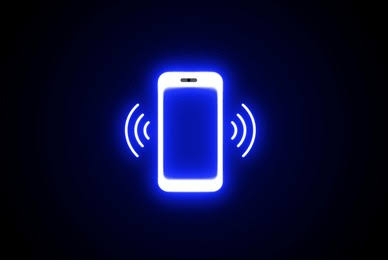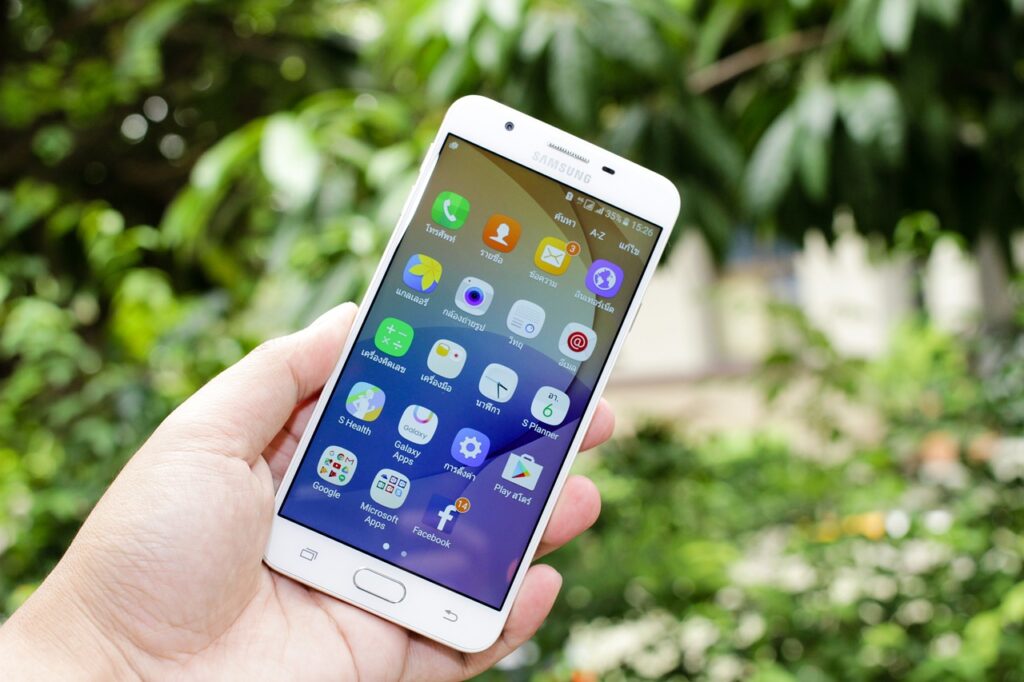How Does a Mobile Phone Work?
Do you think even how does a mobile phone work?Have you ever stopped to think about the fact that your mobile phone you to have a voice conversation with someone halfway around the world, stream videos and surf the internet, and do all of this wihtout any wires? It is something that we take for granted every day, but the technology behind mobile phones is an intriguing mix of physics, engineering, and a bit of art.
In this blog, we will explain how mobile phones work without getting too technical, while focusing on the physics that make mobile phones possible. At the end of this blog, you will not only see your mobile phone as a device you use every day, but also as marvel of modern science.
1.What Is a Mobile Phone, Really?
A mobile phone is a small electronic device that can send and receive voice and data by wirelessly using electromagnetic waves. It works like a mini radio that can communicate with towers, satellites, and even other devices around it.
How Does a mobile phones work?
But to understand how, we need to dive into some physics.

2. The Fundamental Physics Ideas of Mobile Phones
A.Electromagnetic Waves:
Electromagnetic (EM) waves are the basis of mobile communications, and they are waves of energy consisting of coupled electric and magnetic fields. Your mobile phone transmits and receives data in the form of radio waves, which exist within the EM spectrum.
Characteristics of EM waves in mobile phones:
They travel at the speed of light.
They propagate through the air, walls, and various other materials.
Mobile phone systems operate in the frequency range of 800 MHz to 2.6 GHz (gigahertz).
B. Radio Transmission and Reception:
Your smartphone allows you to both transmit and receive information:
The transmitter picks up your voice or data and encodes it into an electrical signal, modulates it (or puts it onto a radio wave), and transmits it out from the antenna.
Close to the cell tower receiver will listen for radio signals coming from the towers, demodulates them, and makes the sound or data available to be understood.
Wireless communication is all of this.
3.How Voice Calls Work- Step by step:
1. Your microphone detects your voice –
It has picked up the sound (a mechanical wave) and converted it to an electrical signal.
2. Analog to Digital Conversion (ADC) –
Your voice is digitized into binary code (1s and 0s).
3. Modulation –
This digital data is modulated to a radio wave via some technique, such as QAM (Quadrature Amplitude Modulation).
4. Transmission –
The modulated signal is transmitted from the antenna to the closest cell tower.
5. Routing –
The signal is routed through the mobile network to your friend’s phone.
6. Reception –
Your friend’s phone demodulates the signal and decodes the binary to make the sound available to be produced by a speaker.
All of this transpires in real time with only milli seconds of delay. How does a mobile phone work?

4. How Mobile Data Works
When you visit a website or watch a video, the data is being transmitted using radio waves. Information is sent in packets, using your phone, cell towers, and eventually to the internet.
Today, phones use 4G, 5G, or Wi-Fi for this purpose, which is just a different method of transmitting radio waves, and faster and better.
4G and 5G transmit radio waves by using a higher modulation technique and multiple antennas (MIMO: Multiple Input, Multiple Output), allowing them to transmit more information simultaneously.
How Does a mobile phone work?
Wi-Fi is a similar wireless technology, albeit shorter distance, and connects through a router.
5. The Role of the SIM Card
How Does a mobile phone work?
Your SIM card acts like an ID for the phone, then connects your phone to your mobile network provider, allowing it to:
Call
Send texts
Connect via data
The SIM card also uses encryption, to keep your communications secure.
6.Inside the Mobile Phone: Key Components:
Let’s take a look at what is inside the phone and how does a mobile phone work? With physics principles:
Antenna – Sends and receives electromagnetic (EM) waves.
Processor (CPU) – Processes information and data as the applications you use. Uses electronic circuit principles that employ logic gates.
Battery – Uses chemical energy from lithium-ion reactions to supply electrical energy.
Screen (LCD or OLED) – Displays images through light and pixel control.
Microphone and Speaker – Convert sounds to and from electrical signals via vibrations and electromagnetism.
7. The Physics of Touchscreens
Touchscreens include either capacitive or resistive technology.
We will look at the capacitive touchscreen, as this is in most contemporary phones. This type of touchscreen detects your finger through the electric field it generates. Your finger will replace the capacitance at the point of contact, and your phone will calculate this point of contact.
Physics behind it: The functional aspects behind a capacitive touchscreen relate to electrostatics specifically how charges are affected while stationary.
8. The Cellular Network: How Phones Stay Connected
How does a mobile phone work? Cell phones work by communicating with cell towers in a network. Each tower covers a “cell” (area).
When you move your phone from one tower to another, it is a process called handover.
The towers are all connected to a central switching system, which connects your call or data to the phone number or address you have requested.
How does a mobile phone work?
This is how your phone works while you are driving across a city.
9. Satellites and GPS: Physics in Navigation
Your phone is also able to communicate with global positioning system (GPS) satellites that orbit the Earth. What they do is send signals whose wave lengths are time-stamped, and your phone listens for at least four of these signals so it can utilize a process called:
Trilateration: Finding the location based on the distance from multiple points.
Time delay – since radio waves propagate at a speed known, the time delay will allow you to calculate how far they are from each satellite.
It utilizes Einstein’s theory of relativity to adjust for the difference in time between the satellite in motion toward your location and the gravitational effects of the planet.
10.The Magic of Miniaturization
All of this technology is contained in something that you can hold in the palm of your hand because of developments in nanotechnology and the physics of semiconductors.
How does a mobile phone work?
Today’s cell phones, according to the Semiconductor Industry Association (2021), rely upon the use of billions of minute or tiny transistors that are on or off switches controlling electricity and executing programs, built on a silicon chip.
Everything is based on quantum mechanics – in particular, the behavior of electrons and other particles in materials.

Conclusion:
The cell phone is more than a device—it is a wonderful application in physics in everyday life. It has components of electromagnetic waves, frequency modulation, GPS, and quantum physics all in a small package that harnesses the laws of nature.
Now you can understand how does a mobile phone work?
Next time you have your phone in your hand, think about how invisible forces and amazing science packages everything together to work so well. Who would have thought physics would be in your hand?
Frequently Asked Questions (FAQs)-How does a mobile phone work?
1. How does a phone send a signal wirelessly?
A phone transmits a signal through air via electromagnetic radio waves using antennas to pick up the waves, which are then translated back into voice or data.
2. What happens when there is no signal?
If your phone cannot connect to the nearest tower, it has no way to send or receive a signal. This is why calls drop or their internet connection fails, especially in remote areas.
3. Is mobile phone radiation dangerous?
Mobile phones transmit non-ionizing radiation, which does not have enough energy to cause DNA damage. It is generally considered safe (as far as research allows for it to be), at the levels found in mobile phone usage.
4. Why does my phone battery drain faster when using mobile data?
When using mobile data, the battery power is used for numerous reasons. Mobile data services require constant communication with towers. When using mobile data, the phone is counting on high process speeds and high frequency transfer rates. Then, when the screen is on, the display uses even more energy.
5. Can I use my phone without a SIM card?
Yes. You can use the phone for tasks such as using wi-fi, camera, and other phone applications. However, you won’t be able to use the phone for making regular phone calls or sending text messages, or use the mobile data feature (unless it is an eSIM using wi-fi calling).
6. How does my phone know where my finger is touching the screen?
Lorem ipsum dolor sit amet, consectetur adipiscing elit. Ut elit tellus, luctus nec ullamcorper mattis, pulvinar dapibus leo.
